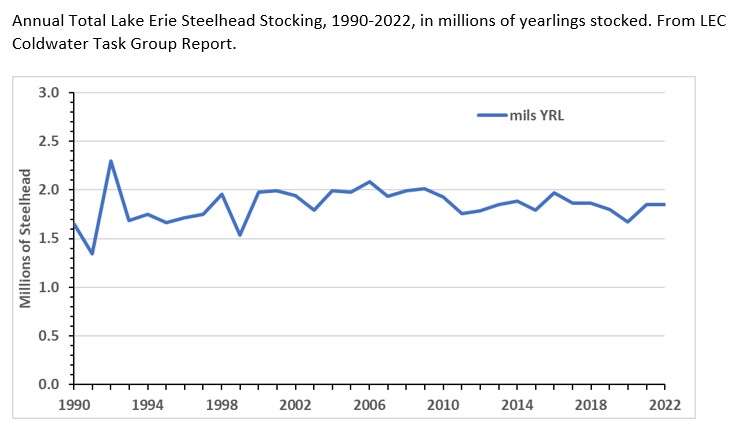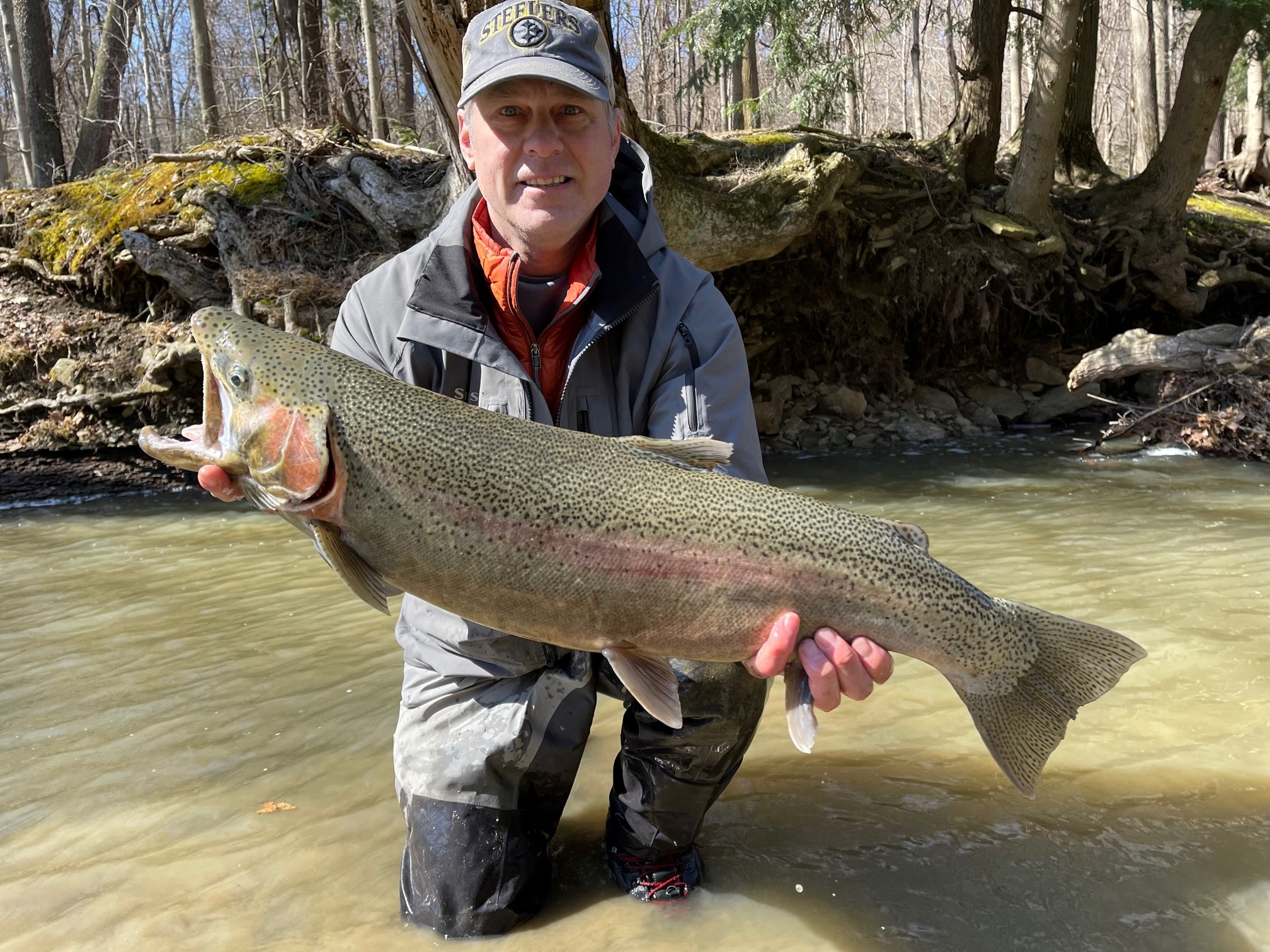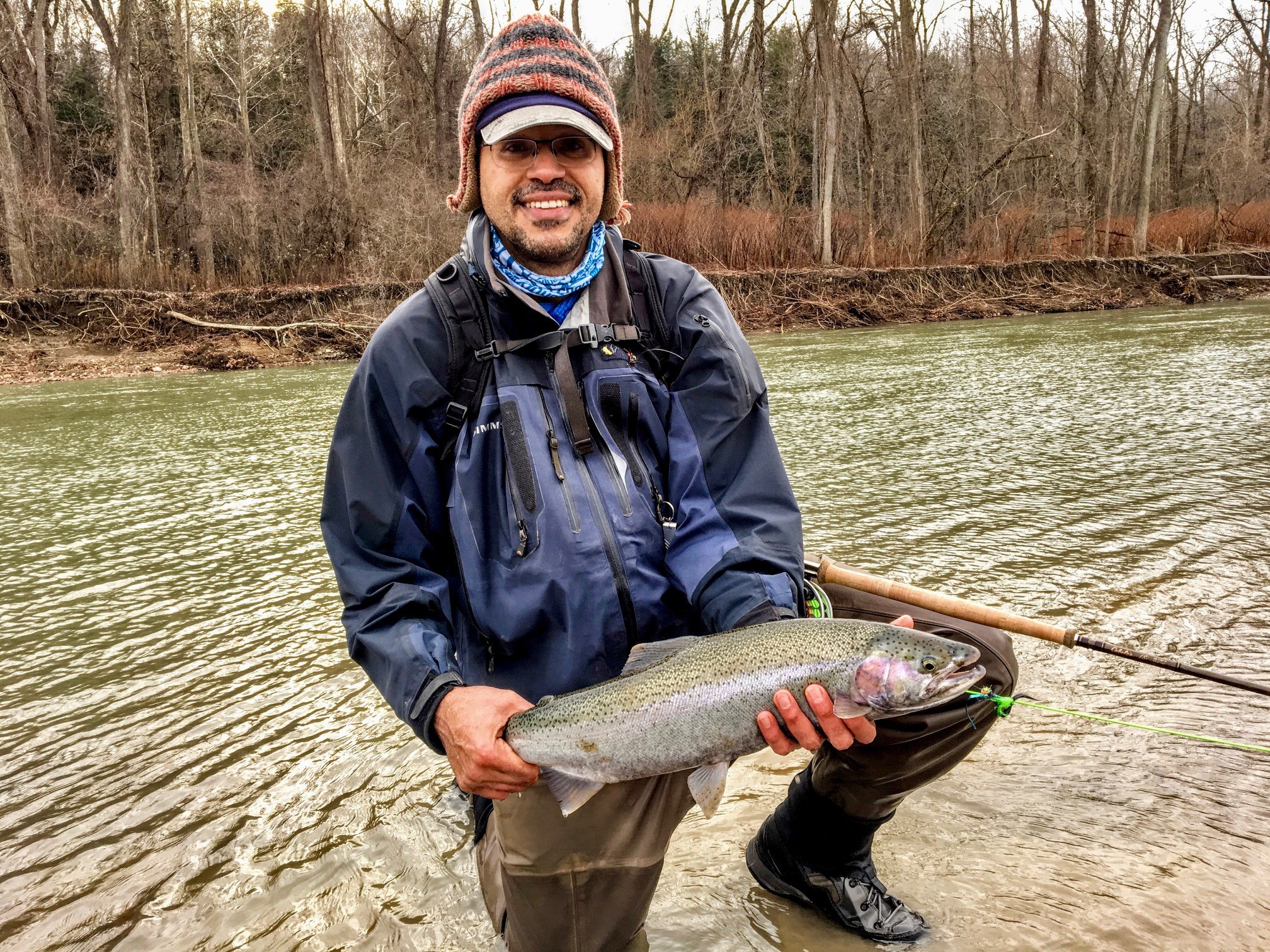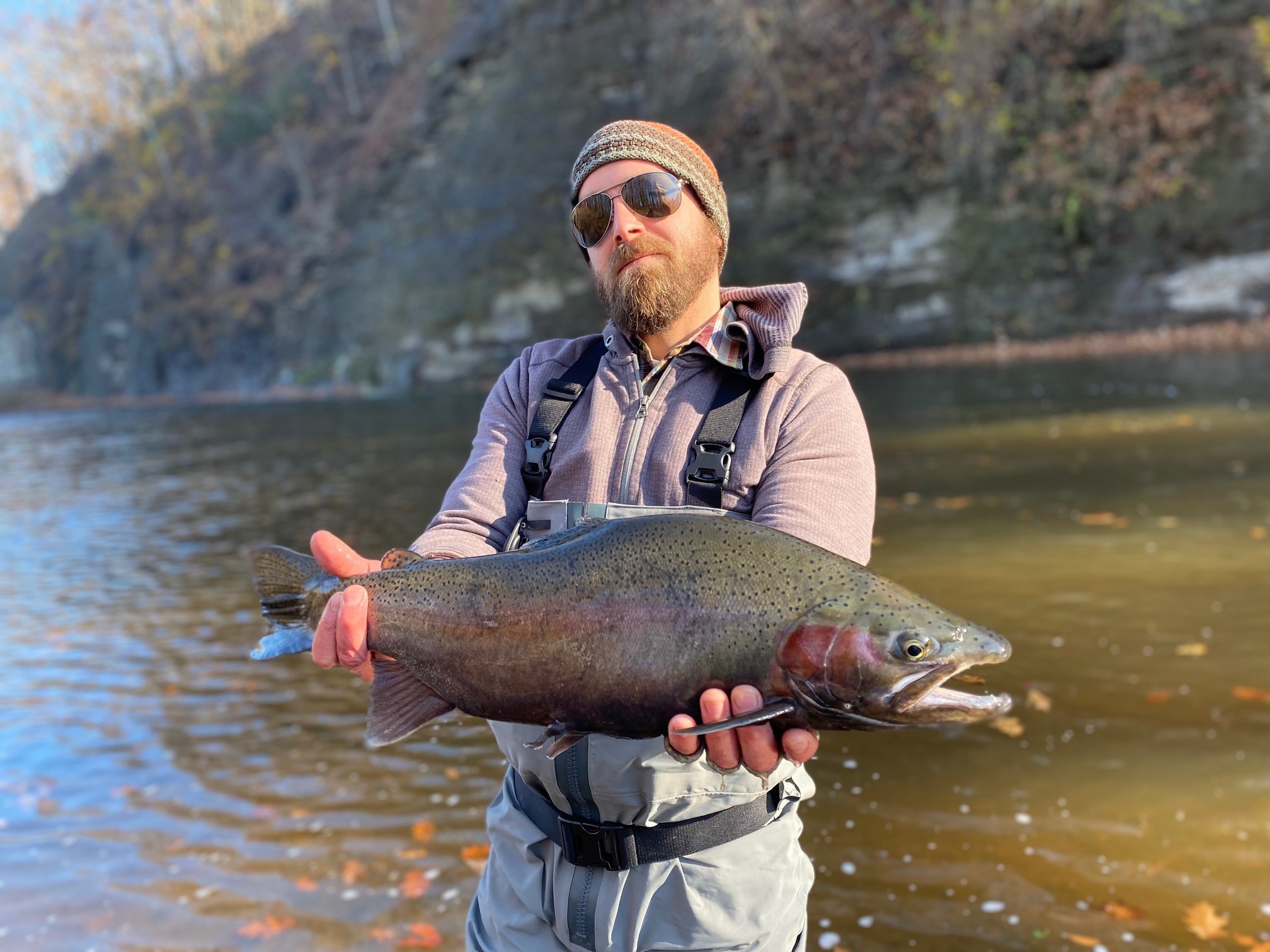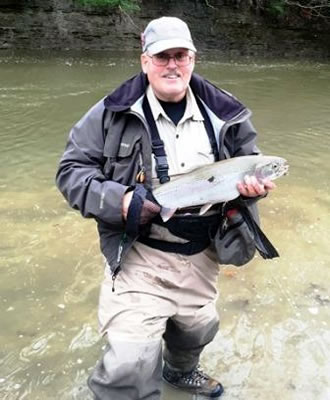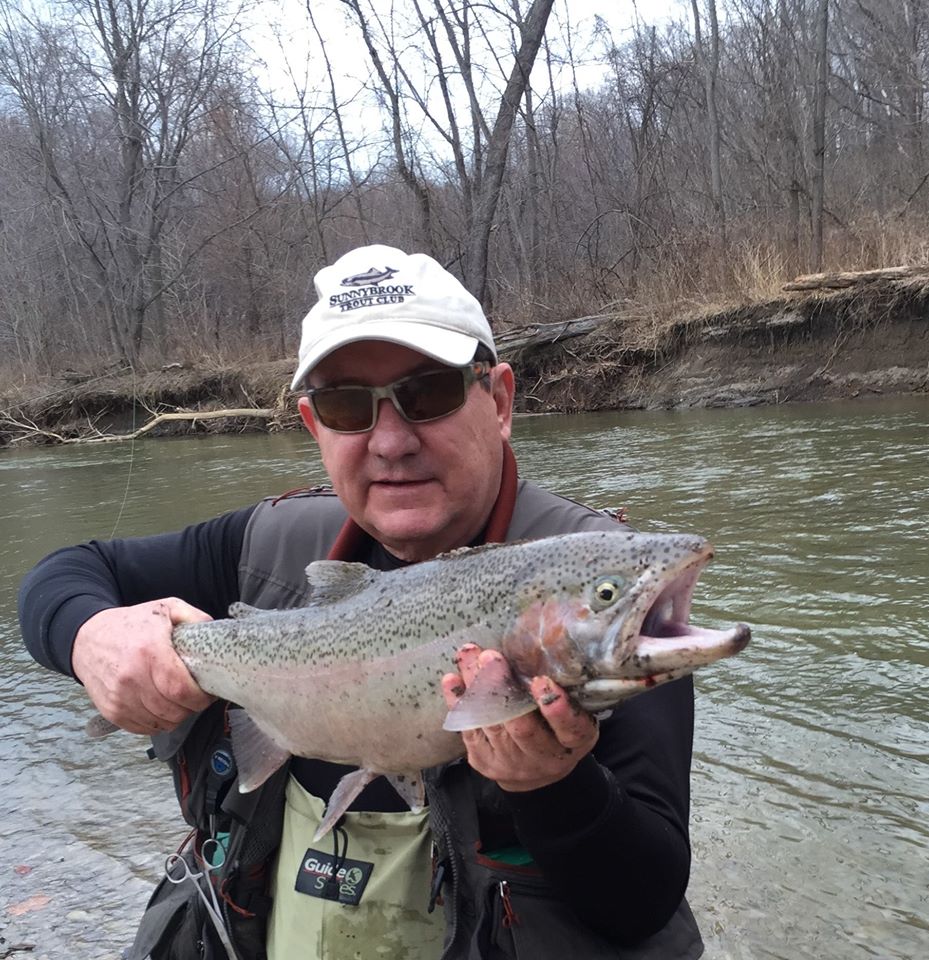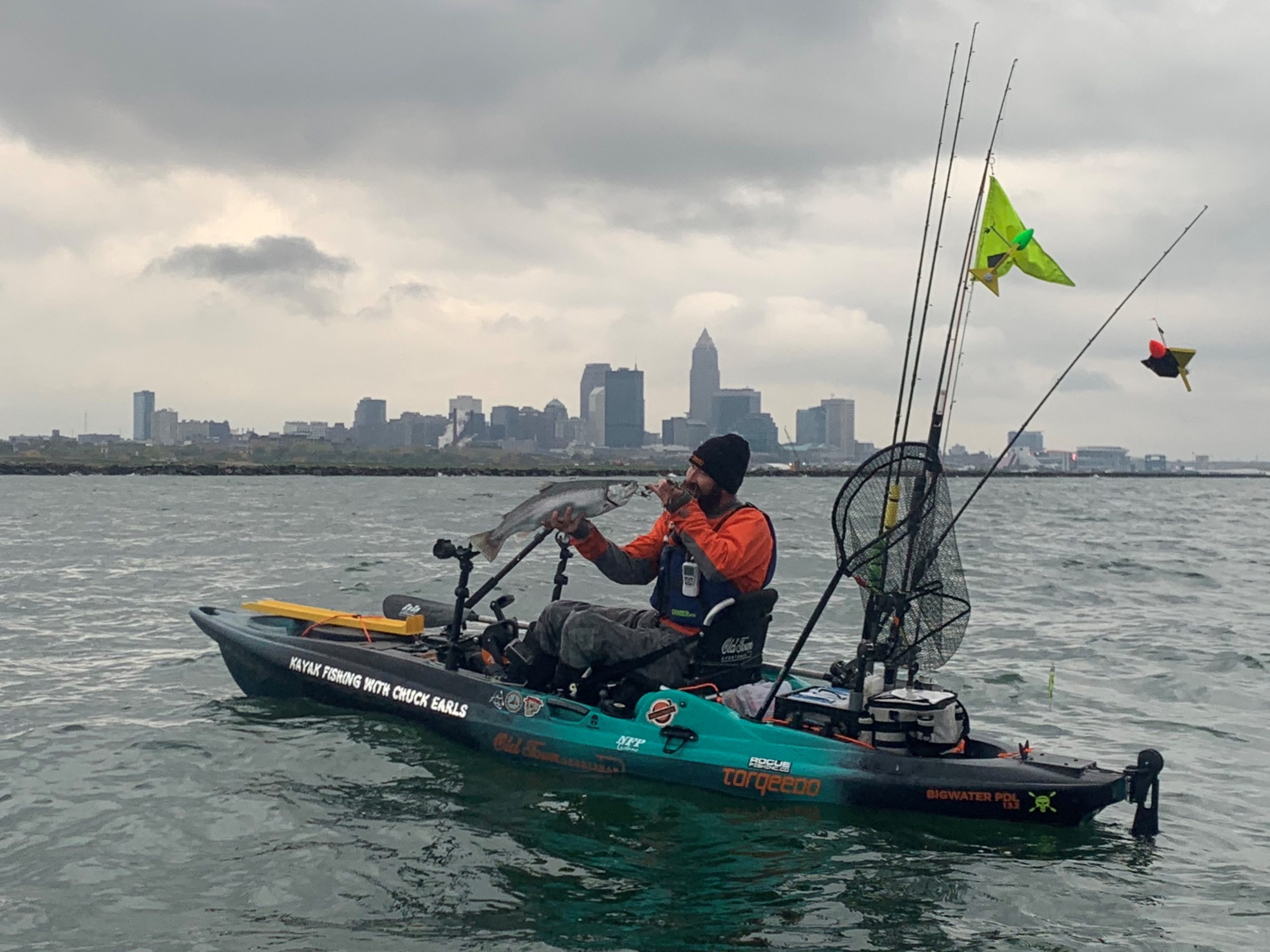Ohio Steelhead Stocking program
The Ohio Division of Wildlife maintains an excellent steelhead fishery through annual stockings of yearling smolts in six of Ohio’s Lake Erie tributaries. Receiving streams from west to east are the Vermilion, Rocky, Chagrin, Grand, and Ashtabula rivers and Conneaut Creek. A seventh river, the Cuyahoga, is scheduled to begin receiving steelhead smolts in the spring of 2024. Approximately 450,000 yearling steelhead smolts is the annual production target for the steelhead program.
Fish return from Lake Erie during the fall through winter and spring. Most fish spend two or three summers in the lake, but fish can spend from one to seven (or more) summers in the lake before they move into the streams. Unlike other Pacific salmon species that perish after their spawning runs, steelhead can move back out into the lake after spawning and make multiple runs in their lifetime.
Steelhead smolts are stocked at public access points upstream from the river mouths in late April to early May, and they average about 6-8 inches long when stocked. It has been shown that stocking spring yearlings low in the rivers gives the best returns as adults to our anglers.
Step by Step Process to Raise Ohio Steelhead at the Castalia State Fish Hatchery
All of Ohio’s steelhead are raised from eyed eggs to yearlings at the ODNR, Division of Wildlife’s Castalia State Fish Hatchery. A typical early life-cycle of steelhead is described below.
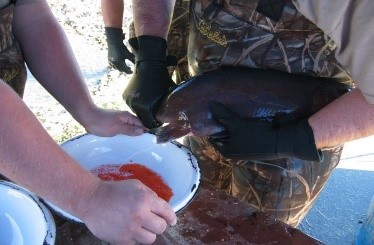
Eggs and milt (sperm) are collected from mature fish onsite in Michigan at the Little Manistee River and in Wisconsin on the Root and Brule rivers. DNR personnel complete the collections and fertilize the eggs. Ohio DNR personnel have assisted in the process. Eggs are treated for disease and packaged for transport to Castalia
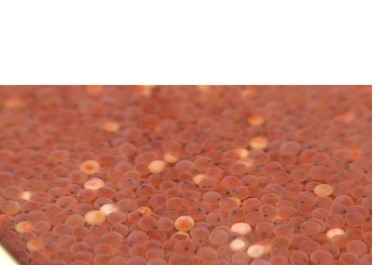
Eggs are transported and received at Castalia, treated for disease again, and then trayed up for hatching. Trays are checked multiple times daily for adequate flow through, and dead eggs (white ones) are removed.
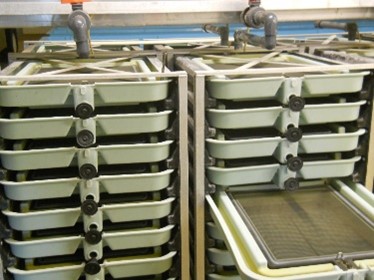
Fish hatch in the trays and spend additional time in the trays until ready to swim up and feed. When ready to swim freely and feed on pellets, they are moved to the raceway inserts in the hatching building.
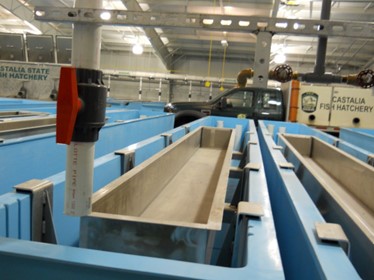
Fish start in the raceway inserts to concentrate feeding efforts and for swim training in a raceway setting. Feed pellet sizes vary with the lengths of fish, and feeding rations are determined by a schedule based on desired growth rates, fish condition, and a percentage of body weight of the fish. After several weeks, fish become large enough to be moved into the larger fiberglass raceway below, and the inserts are removed.
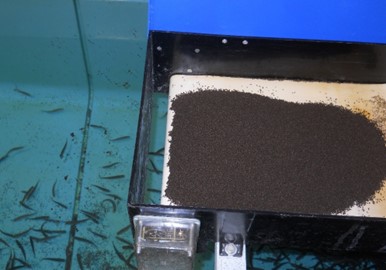
Much of the feeding of the early life stages is automated with belt feeders, like the one shown at the left. The belt feeders deliver food pellets at a specific location and rate into the raceway. Fish will spend late spring through summer in the indoor raceways in the hatching building.
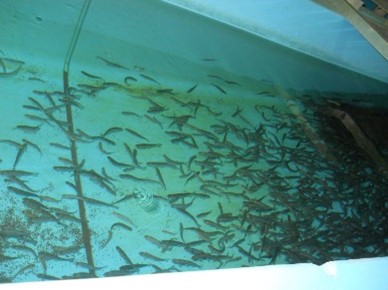
Once fish meet a target size and density in these indoor raceways, they are crowded and moved to the outdoor enclosed raceway. Fish will spend the rest of their growing season in these raceways until they are ready to be stocked in the spring. Fish are inventoried for number, size and weight during the winter and spring, and fish health testing is performed to insure a clean bill of health for a suite of viral, fungal and bacterial diseases of interest
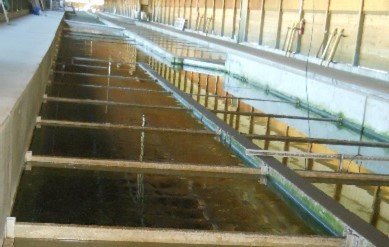
When it is time to stock steelhead, fish are loaded onto trucks at Castalia SFH with a fish loader and trucked to stocking locations at specific steelhead program Lake Erie tributaries. Often OCBS, other steelhead fishing interests, and school groups attend the stockings.
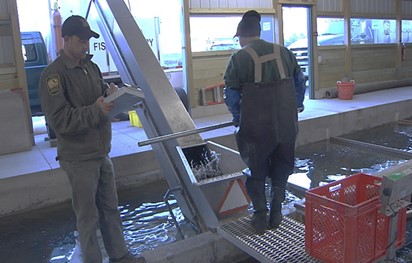
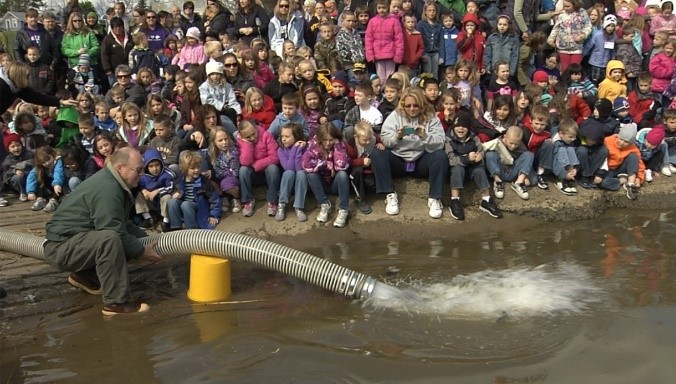
Photos provided by Kevin Kayle
Ohio Steelhead Stocking Dashboard and Lake Erie Trout Stocking History
Ohio DOW Steelhead Stocking Report
2020 to 2024
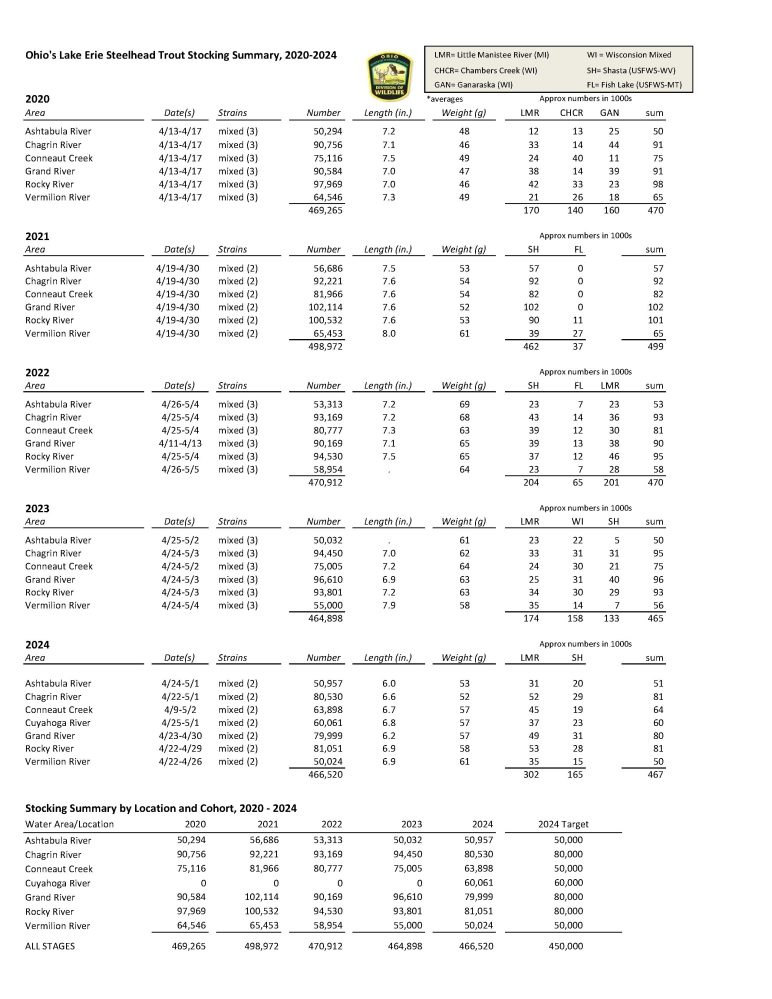
Lake Erie Steelhead Stocking Hhistory by Agency, 2016-2023
Great Lakes Fishery Commission
Lake Erie Committee’s Coldwater Task Group Report, March 2024


The complete 1990 to 2023 Lake Erie Salmonid stocking numbers can be found in the 2023 Lake Erie Coldwater Task Group Report, Table 3.1 at the following link: http://www.sealampreycontrol.us/pubs/lake_committees/erie/CWTG_docs/annual_reports/CWTG_report_2024.pdf.
